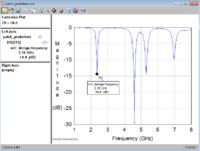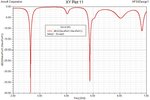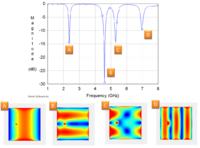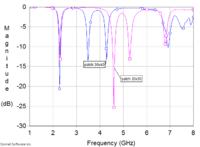falguni_raval
Newbie level 3
I have simulated patch antenna at 2.65 GHz in hfss. I am getting S11 less than -10 db at 2.65 GHZ, 4.88GHZ and 6.88 but when i look at the gain associated with those freq. I get gain at 3.33 db at 2.65 GHZ. But at 4.88GHZ and 6.88 GHZ ,i am getting gain in minus.what can be the reason for that?Are these freq. called harmonics? FR4 is used as substrate.
what is the standard gain of patch antenna when FR4 is used?
what is the standard gain of patch antenna when FR4 is used?




